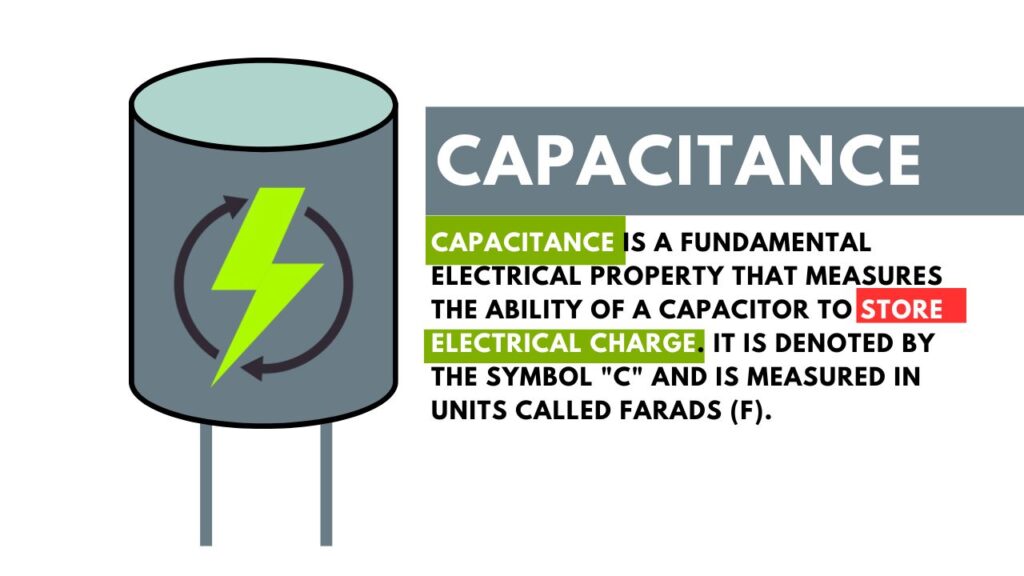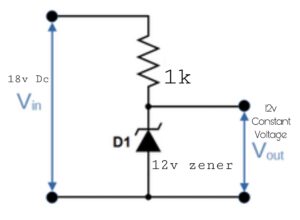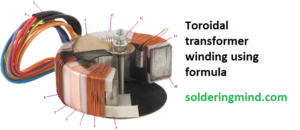
Capacitance is an important electrical property that describes how well a capacitor can store electrical charge.
It is like a measure of its “charge-holding” ability. We use the symbol “C” to represent capacitance, and it’s measured in a unit called farads (F).
Capacitor and its Characteristics
The capacitor is an important component used in electronics circuits. It consists of two metal plates separated by a dielectric material that doesn’t conduct electricity.
When we apply a voltage across the plates, an electric field is created within the capacitor. This causes positive charges to gather on one plate and negative charges on the other plate.
The separation of charges establishes an electric potential difference between the plates.
How Does a Capacitor Works
The value of capacitance determines how much charge can be stored on the plates of a capacitor for a given potential difference ( V ). In simple term it tells us how much energy the capacitor can hold in the form of an electric field.
The capacitance of the capacitor is depends on various factors. These are listed below.
- size and shape of the plates
- The distance between the plates.
- The properties of the dielectric material.
Capacitance increases with larger plate surface areas and higher permittivity of the dielectric material, while it decreases with greater plate separation.
In the practical applications, the capacitors are available in the market with different capacitance values. Usually ranging from very small values like picofarads (pF) to larger ones like microfarads (μF) or even higher.
They are used in electronic circuits for various purposes. it including
- storing energy
- smoothing out voltage fluctuations
- transmitting signals between different parts of a circuit
- filtering out specific frequencies.
Understanding capacitance is fundamental in electronics because it helps us comprehend how capacitors work and their behavior within circuits.
How Does the Shape of Capacitor Affect Capacitance
The shape of the capacitor has an impact on its capacitance, primarily through two factors.
1. The surface area of the plates.
2. The distance between them.
Surface Area of the plate
The capacitance value of a capacitor is related with the surface area of dielectric plates ( non conductive plates ).
When the plates have a larger surface area, they can hold more charges for a given voltage.
This results in a higher capacitance value. In contrast, capacitors with smaller plate areas have less capacity to store charges and thus have lower capacitance.
Distance Between the Dielectric plates
The capacitance of the capacitor is inversely affected by the distance between its plates.
When the distance between the two dielectric plates are decreases, then the electric field between them becomes stronger. So this will allowing more charges to accumulate.
This leads to a higher capacitance. On the other hand, increasing the distance between the plates weakens the electric field and it will reduces the capacitance.
It is important to note that the impact of shape on capacitance primarily relates to the arrangement and geometry of the plates.
For instance, capacitors with flat parallel plates have a relatively straightforward relationship between plate area and capacitance.
However, for capacitors with more complex shapes like cylindrical or spherical capacitors, the calculation of capacitance involves more intricate mathematical formulas.




